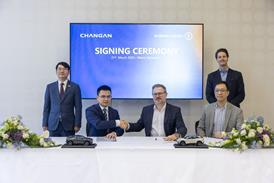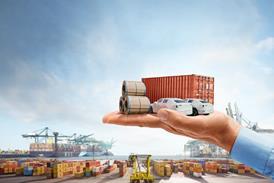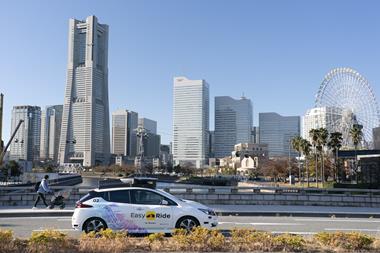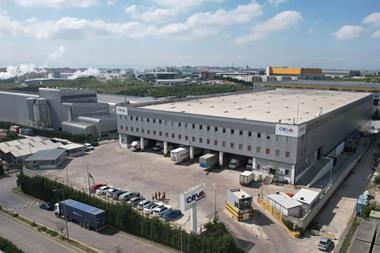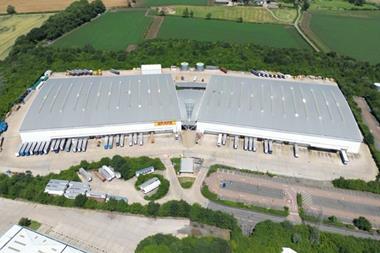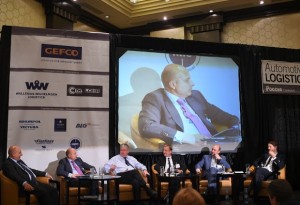 Discussions at this year’s Automotive Logistics Russia conference in Moscow moved across a range of subjects from the importance of survival and preparing for growth during a difficult economic slump to the importance of localisation and what needs to be done in terms of simplifying some of the more arcane procedures governing imports and exports to the country. For automotive logistics operators and their customers there is not an easy answer to the problems typifying the market but there were some sage pieces of advice and a surprising level of optimism.
Discussions at this year’s Automotive Logistics Russia conference in Moscow moved across a range of subjects from the importance of survival and preparing for growth during a difficult economic slump to the importance of localisation and what needs to be done in terms of simplifying some of the more arcane procedures governing imports and exports to the country. For automotive logistics operators and their customers there is not an easy answer to the problems typifying the market but there were some sage pieces of advice and a surprising level of optimism.
…on optimism in a difficult market
Despite the bad performance in the market now, it is a good time for logistics planning and an involvement in future logistics projects.
Alexey Kokotkin, manager of vehicle logistics, Toyota Motor Russia.
Growth is five years away. We have to stay in the game. You can’t just cost-reduce yourself to success, there has to be an alternative strategy. I can see us struggling to find it but with all the intelligence here in Russia, we will.
Roger Rogers, executive director, MP&L, Ford Sollers
The fact that we are here today means that things are not so grim which is why I have decided to be an optimist. The World Bank in the middle of June improved the outlook on the decline of the Russian economy for 2015. So now we are not looking at the 3.8% decline but only a 2.7% decline. Is that positive? Absolutely.
Elena Lukanova, president, Adampol
Crisis is the time for reflection and reinvention. We have seen some practical proposals here. Not only from service providers but from manufacturers. Success is achieved through partnership and we are not just talking about survival, we are talking about moving forward.
Alexey Kostenko, supply chain design and logistics services, Magna
Given the 2.9m vehicles sold in 2012 and the average five-year period of ownership there is potential for the automotive market to grow once the economy improves. We don’t expect anything dramatic next year but the delayed demand for 2017/18 will make it a great recovery.
Sergey Litvinenko, director, Automotive Advisory Services, PwC Automotive Practice
…on the pros and cons of localisation
Localisation means having the right local logistics providers. We tend to work with the big international logistics providers operating in Russia but there is scope for developing local partners. We know how to bring it in from outside Russia but we need to know how to bring it to our plants within Russia with local providers.
Adam Misiak, global manager, International Logistics, Delphi
There is localisation of the product and localisation of people. As a major source of employment, we cannot still parachute people in to run businesses here. I came two and half years ago with the specific intention of not being here now. My role is as a teacher. I want to see more people in a mentoring role. I want to see the business transferred to local Russian expertise.
Roger Rogers, executive director, MP&L, Ford Sollers
We need local LSPs with the same standard of services we get in Europe. A cheaper company should not mean a drop in the service level.
Alexey Kostenko, supply chain design and logistics services, Magna
We have challenges in bringing our suppliers closer to our plants. The challenge is always the cost here. I don’t know why but Russian customs is extremely expensive.
Adam Misiak, regional supply chain manager, EMEA, Delphi
…on imports to Russia
There needs to be a simplification of import procedures, which are slowing down the whole supply chain. That would help the operators here to work better. There are a lot more formalities here compared to other countries. You cannot deal with the company unless you have the right Russian authority stamp, which makes the process of setting up a contract a lot longer.
Adam Misiak, global manager, International Logistics, Delphi
What we recommend, especially if you have inbound shipments by sea, is to carry out customs clearance at the ports and not in central Russia. Doing this means you will avoid the border procedure. Today that can add up to between 80-100 euros per container.
Nataliya Zakirova, head of sales, Gefco Russia
Having AEO status means we have a green light for material imported. It doesn’t mean everything has to go through customs inspection. Customs trusts what we declare and that means we can significantly reduce lead time and warehousing costs.
Alexey Kostenko, supply chain design and logistics services, Magna
...on what needs to be improved
When I came to Elabuga our teams were using what they had always known at Sollers. It was difficult for them to adapt. It requires discipline. It is about implementation of Ford standards and finding ways to get people to adopt them.
Roger Rogers, executive director, MP&L, Ford Sollers
I hope by 2017 we will see some better sales results. To survive in the meantime we need to talk about improving together and establishing a better dialogue. Everyone has a lot of financial problems and with maintaining standards. We must find a unique solution for the customer.
Elena Lukanova, president, Adampol
There are some things we want get improved from the service providers point of view, especially concerning the lack of standards when combining track and trace with performance evaluations. That would allow us to eliminate waste and decrease costs.
Alexey Kostenko, supply chain design and logistics services, Magna


















